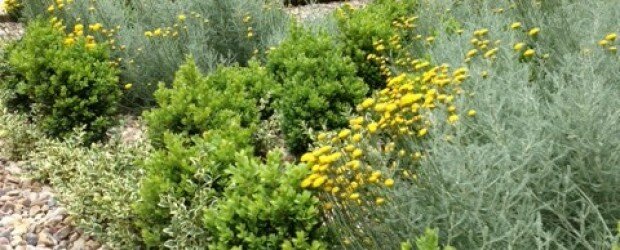The new Education Garden

The Education Garden creates harmony with the surrounding historic buildings and landscape, connecting the Palace with the outside space physically and intellectually. It contextualises understanding and learning through its multi sensory approach. It is used for special programmes for school groups and informal opportunities for adults and families.
Some history
Like the Roman villa that predated it on the site, the Palace was residential in purpose, never having been crenellated. The area was relatively easy to defend, the agriculture was good, the wells of Southwell provided fresh water and the river Trent was nearby to bring-in supplies.
The Archbishops therefore maintained an extensive deer park and gardens, surviving sections of which are still owned by Southwell Minster. The remnant of the park is known today as The Potwell Dyke Grasslands, a Site of Importance to Nature Conservation (SINC).
Former areas of garden survive to the south and to the east of the Palace.
The Garden today
The new design has a number of distinct parts to it (woodland, knot garden, parterre, wildlife area) and these features will evoke the timeline of the Palace.
The herbs of the parterre can be used by children to distinguish between different smells and taste and to provide education about cookery and medicinal plants (both past and present). Hampton Court Palace was owned by Cardinal Wolsey and, so, a Tudor garden flanked by rose arbours and goblet fruit trees (e.g. medlars) will be created to the side of the ruined area.
The existing herbaceous border will be replanted in “Gertrude Jekyll” style, reflecting the Arts and Craft style of the Bishop’s Manor, which was built into one side of the Palace in Edwardian times.
The woodland area is being developed to provide links to the famous “Leaves of Southwell” – the thirteenth century carved stone leaves in Southwell Minster’s Chapter House, while a winter border will be created to include plants that, throughout the ages, have been considered especially effective for bark, stems, flowers and scent.
The lawn is a lovely, open social space where local residents and visitors can picnic and children can relax when on school visits. As appropriate, a marquee can be erected for wedding receptions, summertime dinners or other special events.
Encouraging wildlife, sustainability and conservation
Wildlife is encouraged via the incorporation of bird boxes, insect hotels, log piles, native wild flower areas (using seed from Potwell Dyke) and more hedges. Sustainability is enhanced through the use of compost and recycling and focusing on organic methods to control pests and disease.
The newly restored garden will be open to the public free of charge.

